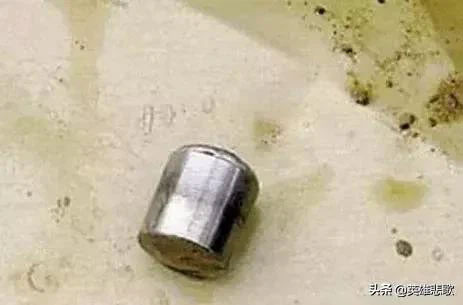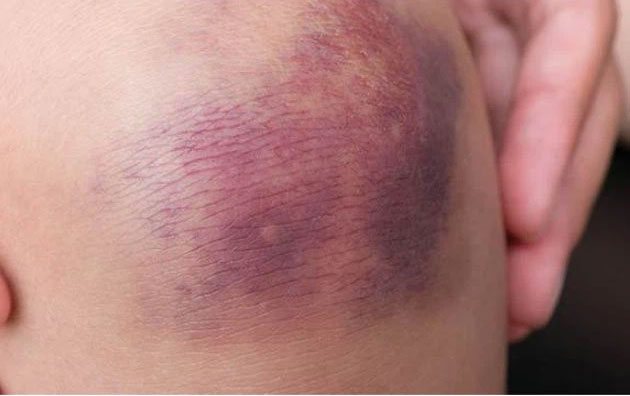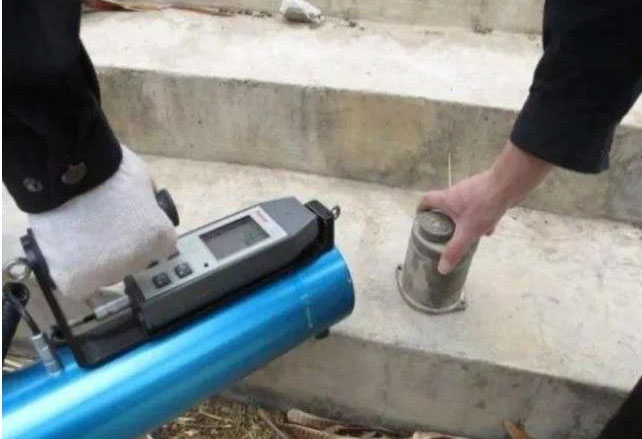In 1992, within just one month, a mysterious small iron block led to the deaths of three individuals from Sơn Tây, China, along with hundreds of others suffering permanent disabilities.
Unexplained Symptoms
On November 19, 1992, while working at a construction site, a construction worker named Zhang Youxiang found a shiny small iron block. Without much thought, he put it in his pocket. That afternoon, Youxiang began experiencing strange reactions such as dizziness, nausea, and diarrhea.
Initially, he thought he had eaten something bad; however, by the afternoon, the symptoms worsened, prompting him to seek medical treatment at a hospital.

The disaster began when construction worker Zhang Youxiang picked up a small iron block on the road. (Photo: NetEase).
At the Hanchao District Hospital, after examining his symptoms and inquiring about recent activities, the doctors could not determine the cause of his condition. They prescribed anti-inflammatory medication and advised him to rest at home.
However, just two days later, on November 21, Youxiang’s second brother, You Song, began experiencing similar symptoms. Both of their cheeks and parotid glands started to turn purple.
The unusual condition of the two brothers attracted the attention of the local hospital, and the doctors worried that they might have contracted some infectious disease, so they isolated them. By November 24, Youxiang’s symptoms had worsened: he started losing hair, and the right side of his abdomen and thigh turned dark purple. Their father was extremely worried, but since the hospital had no treatment options, he had to take both of them home.
One by One They Fell
After returning home, Zhang Youxiang’s condition deteriorated rapidly. He fell into a light coma and ultimately passed away after 14 days of pain and suffering. Two days later, on December 5, Zhang You Song also died like his younger brother.
On December 7, their father noticed familiar symptoms and found himself unable to escape the fate that claimed his two unfortunate sons.

The skin of the victims gradually turned dark purple. (Source: 163.com)
On December 16, Youxiang’s wife, the first person to fall ill, began losing her hair. At this time, Zhang Fang was five months pregnant and in a very weak condition. She was determined to go to Beijing to seek treatment and uncover the cause of her family’s deaths. In Beijing, Zhang Fang was taken by her father to the Beijing People’s Hospital, Hematology Department for treatment.
The doctors there took Zhang Fang’s blood for testing and found that her white blood cell count was less than 1/10 of the normal level. Her test sample was immediately sent to the Academy of Military Science of the People’s Liberation Army of China for study.
What Was the Cause?
During the consultation process, Dr. Mao Bingzhi, the head of the Radiation Department, suggested testing Zhang Fang’s chromosomes. After the examination, experts discovered that 44.7% of her cells had severe abnormalities, while the normal rate is only 0.03%.

The measured radiation level was very high. (Source: 163.com).
A series of strange reactions occurring in Zhang Fang’s body indicated that she had suffered from ionizing radiation exposure. Thus, the cause of death for the three Zhang family members was identified—they all died from acute radiation sickness.
The Truth Revealed
After intense efforts by the authorities, the culprit was finally identified: It was the cylindrical iron block that Zhang Youxiang found at the construction site.
This was actually Cobalt-60 (Co-60)—a synthetic radioactive isotope of cobalt with a half-life of 5.2713 years, produced artificially in nuclear reactors. Under normal conditions, it exists in solid form with properties similar to iron and nickel.
Co-60 is widely used in various industries today, particularly in radiation therapy equipment in hospitals and for food sterilization. However, all ionizing radiation, including Co-60, is known to be one of the carcinogenic agents. External exposure to a large source of Co-60 can cause skin burns, acute radiation syndrome, and even death.
In 1973, the Science and Technology Department of Hanchao City, Shanxi Province, conducted a radiation breeding project using Co-60 radioactive source equipment from Shanghai Medical Equipment Company.

This device was installed in a deep well underground in the Science and Technology Department of Hanchao City to irradiate wheat seeds. In 1980, the Hanchao Science and Technology Bureau moved to the Hanchao Environmental Monitoring Station, and the radioactive source equipment was moved along with it.
However, in 1991, the Hanchao Environmental Monitoring Station was rebuilt, leading to the relocation of the irradiation equipment as well. A fatal mistake occurred here!
While a total of 6 cobalt elements were installed in 1973, the staff mistakenly believed that only 5 elements were present. One cobalt element was left underground. Coincidentally, Zhang Youxiang was hired by the monitoring station to dig the foundation.
After the incident was clarified, all individuals involved were held criminally responsible and required to compensate the victims. However, no matter how much compensation was provided, the three lives and the 141 lives destroyed could never be restored.





















































